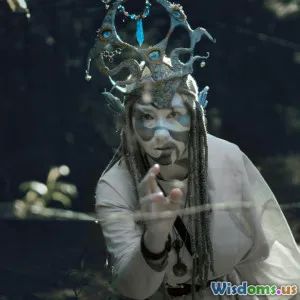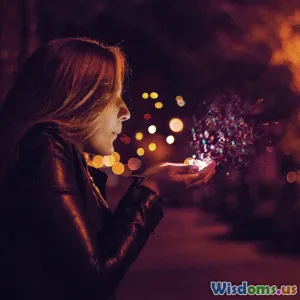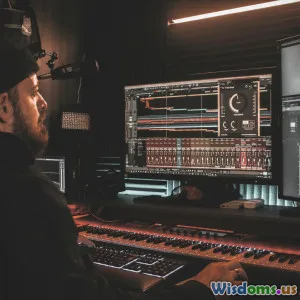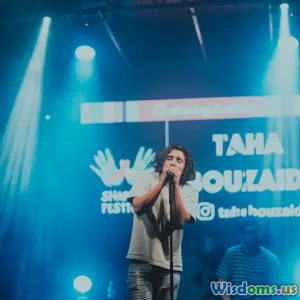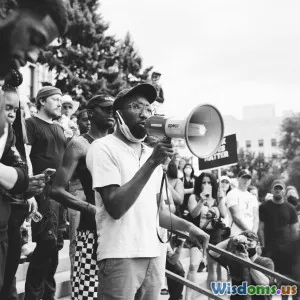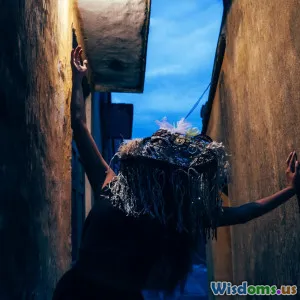
Personal Journey Performing Unscripted Street Theater
18 min read Uncover the exhilaration, challenges, and life lessons from an unscripted street theater journey—a firsthand account blending art, humanity, and courage on the raw urban stage. (0 Reviews)
My Personal Journey Performing Unscripted Street Theater
Introduction: Into the Urban Spotlight
The bustle of a crowded city sidewalk, the persistent beat of distant traffic, the scent of warm pretzels mingling with car exhaust—all inescapable in my first moments standing alone atop a scruffy wooden crate, juggling a trio of fluorescent plastic balls in the heart of downtown. This wasn’t theater as I—or nearly anyone—had known it. No plush red curtains, no carefully lit stages, no audience sipping wine while perusing thick paper programs. Here, the script unraveled spontaneously, demanded by the mood of the crowds, the weather, and the rhythm of the street itself.
That first performance as a street artist pulled back the curtain on an unpredictable, electrifying world. Unscripted street theater is a crucible for creativity and self-discovery, requiring raw courage as much as practice. My years working in this impromptu environment reshaped not only my art—but how I engage with the world, risk vulnerability, and empathize with strangers. Here is my journey, chronicled through the milestones, trials, and revelations only possible on the raw, restless city stage.
The Allure of Unscripted Freedom
Breaking Free from the Proscenium
Most performers cut their teeth in classrooms, community centers, or small theaters. That regimen demands precision: marks must be hit, lighting cues met, lines delivered exactly. As a classically trained actor, I did well in these spaces, but I yearned for something more—an outlet for immediate connection and honest feedback. I wanted pickpockets to double as stage managers, pedestrians masquerading as patrons.
The leap to street theater happened almost by accident. During my first year in college, I visited Covent Garden in London and watched a juggler gather a circle of viewers with just a few tricks and well-timed winks. It struck me: this was authentic, unfiltered performance, with potential for both humiliation and triumph in equal measure.
The Magic of Spontaneity
Street theater is, by its nature, unscripted. Dialogue evolves in real-time, shaped by laughter, heckles, or even the abrupt shriek of a passing police siren. The dynamic interplay between performer and bystanders asked more of me than any audition: wit, agility, and emotional honesty. Every interaction became an unwritten scene, powered by live energy rarely matched inside a theater’s walls.
The First Steps: Entering the Arena of Unpredictability
Mustering the Nerve
My heart pounded the first time I set up at a busy intersection in my hometown. The tools were simple—a battered suitcase of props, a portable speaker, some chalk to mark my “stage”—but the stakes felt enormous. I’d watched countless skilled artists collect applause and coins, but stepping behind that invisible barrier between audience and performer required nerve I wasn’t sure I possessed.
My legs trembled as I cleared my throat to begin an improvised comedy routine while balancing on a wobbling board. Within minutes, crowd members started filtering in—shy at first, some pausing to watch with folded arms before drifting away, others engaging by shouting comments or challenging my jokes.
What I learned quickly was that street audiences gave the most honest feedback imaginable. If my energy lagged, if my jokes stumbled, if I wasn’t interesting, my “theater” would blink out before my eyes. At times a packed circle would disperse with one botched trick or poorly timed jest. Every moment demanded focus, humility, and resilience.
Navigating Rejection and Encouragement
Perhaps the most humbling lesson came from rejection. Unlike the safe insulation of a theater, here a bad act would be instantly ignored. I witnessed people yawn ostentatiously and walk away, sometimes just as I was about to deliver a punchline. But occasionally, encouragement would bubble up from the least expected places—a child tossing a few quarters at my feet, or a construction worker nodding approval. With time, I learned not to fear this honesty; it freed me to experiment, adapt, and grow with genuinely public critique.
Crafting the Street Performer’s Toolkit
Essential Skills Beyond Script
Street theater requires more than strong acting chops or a dazzling trick. The best street artists draw from a vast toolkit:
-
Improvisation: Every moment is a negotiation—bystanders might heckle, or a rainfall might disrupt the show. Honing improvisational skills allowed me to turn unexpected circumstances into highlights. As one performer once told me in Barcelona, “On the street, mishaps are your material. Take whatever comes and make it your punchline.”
-
Audience Engagement: The audience is not a passive spectator; they actively shape the act. I learned to read faces, call out to passersby, and gently pull participants into the action. By personalizing remarks (“Nice hat, sir—does it help you fly?”), I made everyone feel part of the story.
-
Adaptability and Resilience: City by city, performance laws varied. One afternoon in Paris, gendarmes asked me to move, while tourists filmed and applauded. Sometimes language barriers forced me to rely more on gestures, dance, and slapstick than words.
-
Safety and Set-up: Unlike staged venues, streets present real physical risks—uneven ground, sudden crowds, arriving emergency vehicles. Packing light but securely and learning to read the rhythm of pedestrian traffic became as critical as practicing lines.
Building a Character on the Go
Early on, I adopted the stage name “Milo the Marvel,” inspired by a mischievous silent film clown. The character’s personality emerged differently in each city—quirky in Venice, reserved in Zurich, boisterous in Mexico City. The improvisational nature of the street forced me to lean into traits that resonated with each crowd.
I also learned to tailor routines to local culture. In Berlin, reworking my act to nod at local customs (“I’m only here to practice being on time, like a German train—but less reliable!”) created instant rapport. Over time, I noticed my persona leaking into my daily life—proof that street theater changes the performer as much as the onlookers.
Unpredictable Moments: Highs, Lows, and Lessons
Triumphs That Still Carry Weight
Some street theater moments felt cinematic. One late autumn evening in Prague, a spontaneous bit involving a plastic broom and a runaway puppy riveted a crowd, eventually filling an entire plaza. Tourists and locals alike tossed coins into my hat (and the puppy’s owner thanked me for the distraction).
Another unforgettable high unfolded during a rainy afternoon in Toronto. Thinking the weather would clear the streets, I set up anyway—only to find sheltering commuters eager for distraction. With umbrellas providing impromptu props, I drew in the damp, shuffling throng. By the end, laughter echoed beneath the overhangs, cutting through the dreariness.
Both experiences illuminated the power of presence—showing up, no matter the circumstances, often yields magic when least expected. Audiences, robbed typically by technology of spontaneous encounters, relished becoming active characters in a shared, ephemeral story.
Weathering Setbacks and Criticism
Public art means public risk. Not every city rewarded risk with tips or applause; some responded with indifference or hostility. Once, in a conservative Amsterdam district, my slapstick failed to connect, and a group of onlookers laughed at, not with, my attempts. Children, who elsewhere joined in gleeful games, avoided the performance. It stung, but analyzing afterwards why certain elements failed provided invaluable feedback.
There were also logistical hazards: security officers who asked me to move along, territorial disputes with other performers, and—most frightening—a theft of my props, which forced me to invent a new routine on the spot using borrowed fruit and sidewalk chalk.
These setbacks sharpened my resilience, honed my humility, and reinforced the need for flexibility. Over time, I began to view “failure” less as defeat and more as research. What jokes or bits translated across borders? What persona adjustments proved effective in chilly cities versus warm ones, busy business districts versus sleepy neighborhoods?
Connections and Human Kindness on the Open Stage
Unraveling the Wall Between Performer and Audience
Traditional theater depends on the “fourth wall”—a symbolic barrier separating audience from actor. Street theater abhors this comfort zone. I have had toddlers topple my prop crate mid-routine, startled tourists unintentionally steal my punchline, and grumpy commuters transform into showstoppers after a little coaxing.
One of my most poignant experiences involved an elderly woman at a festival in Montreal. At first, she stood at the edge of the circle, eyeing me suspiciously. When I playfully handed her a hat, she hesitated but then accepted. Seconds later, caught in the act, she tossed it into the air—and the crowd exploded in laughter. Afterwards, she confided that she hadn’t laughed so freely in years. In that suspended interval, the rigid social strata of the city melted away.
Street theater compelled empathy. I learned to see each bystander not as an anonymous mass but as individual characters with backstories and moods. On slow days, I’ve switched from over-the-top clownery to quiet puppetry, adjusting my approach to fit the emotional weather as keenly as the atmospheric one.
A Transformative Force: Community in Chaos
The shared vulnerability—artists and audience alike—cultivates remarkable moments of community. On major urban holidays, I sometimes joined “flash mob” performances with other artists. Despite having no rehearsed choreography, we quickly found harmony. An impromptu drumbeat would form; dance troupes and spoken word poets would loop together into spontaneous, dazzling street symphonies, from Minneapolis to Melbourne.
Such encounters reminded me of anthropologist Victor Turner’s idea of “communitas”—a brief, unstructured break from hierarchy and societal order, where participants, freed from identities and expectations, simply play. Street theater is the neighborhood embodiment of communitas: disorganized, unsanctioned, yet achingly beautiful.
Art as Resistance: Street Theater’s Radical Potential
Challenging the Norms, Speaking Truth
Historically, unscripted public performance has often served as a tool for resistance and social commentary. During turbulent protests in New York, I watched performers turn street corners into stages for parody, satire, and public debate. Oblivious to the conventions and censorship of traditional theater, the street allowed us to play with ideas that unsettled and provoked.
During the 2017 Women’s March, I collaborated with artists who performed silent tableaux and unchoreographed dance routines, attracting crowds—and sometimes police attention—with nothing but cardboard signs and expressive movement. The unscripted elements amplified the immediacy: in minutes, passersby became protagonists in unexpected, moving spectacles challenging passivity and sparking conversation.
My own acts often wove in subtle social commentary—lampooning corporate greed with humorous rants, or enveloping stories about urban loneliness into physical comedy. Nothing enlivens satire like immediate, energetic rebuttal from an audience unafraid to interrupt.
Making Room for the Marginalized
Street theater, by its very openness, democratizes both performance and audience. Anyone with something to say or a story to share, from immigrant artists to seasoned veterans, can claim space. In Tucson, I witnessed a troupe of kids from refugee families perform an unscripted play on the journey to America—a profoundly moving, impromptu history, staged in two languages and wild gestures.
For those marginalized on traditional stages, street theater remains a lifeline. It strips away the expensive accoutrements, leaving only raw talent and story. I am continually humbled by the inventiveness and bravery bustled from the backstreets onto the public stage.
Lessons Beyond the Spotlight
Building Life Skills
While I initially approached unscripted street theater as an artistic experiment, I quickly found its lessons rippling into my daily existence:
-
Courage in Uncertainty: Embracing discomfort became easier, on and off the stage. I tackled new environments and challenges with greater ease, buoyed by memories of surviving sidewalk mishaps.
-
Grace Under Pressure: When faced with unforeseen obstacles—a sudden office crisis, a derailed plan—I react with the improvisational mindset learned from the street.
-
Listening and Empathy: The necessity to “read a room” founded a deeper capacity to listen, observe, and adapt to people’s emotional needs. I developed genuine curiosity about strangers’ stories and perspectives.
-
Appreciation for Small Joys: Many performances are short-lived and uncompensated, but the spontaneous gratitude—a smile, laugh, or a shared joke—taught me to celebrate small, fleeting pleasures.
Professional Growth and Artistic Fulfillment
Years later, as I blend street theater techniques into corporate workshops and community projects, the legacy endures. The comfort with unpredictability informs my mentoring of young performers. Teaching unscripted engagement helps future artists leapfrog the paralyzing fear of failure.
Instrumentally, unscripted street theater reminded me that the truest artistry is not in silence behind imaginary curtains, but in the messy communion with the everyday world—the theater of people.
Conclusion: The City as My Stage—And Yours
If you’ve ever wondered what it would be like to step outside, lay down a hat, and invite the world to watch you create, take it from me: few experiences will so transform your courage, creativity, and capacity for connection. Unscripted street theater fosters a playground of possibility, where daily routines interrupt, conventions dissolve, and the crowd becomes collaborator.
Today, my toolbox is always primed: a joke in my pocket, a dance move at the edge of recall, a readiness for the symphony of the street. Unexpected gifts—friendships, lessons, fleeting joys—continue to come my way. I encourage anyone curious about performance, community, or simply breaking out of their shell: find a street corner, summon your inner Marvel or maestro, and play. Let honesty, spontaneity, and open hearts be your only script.
Rate the Post
User Reviews
Popular Posts












